X-Men ’97’s Big Episode 6 Cameos and Character Returns Explained
X-Men '97 episode 6 features quite a few new and returning characters. Here's a guide to who's who if you can't tell Deathbird from Lilandra or Vulcan from Gladiator.
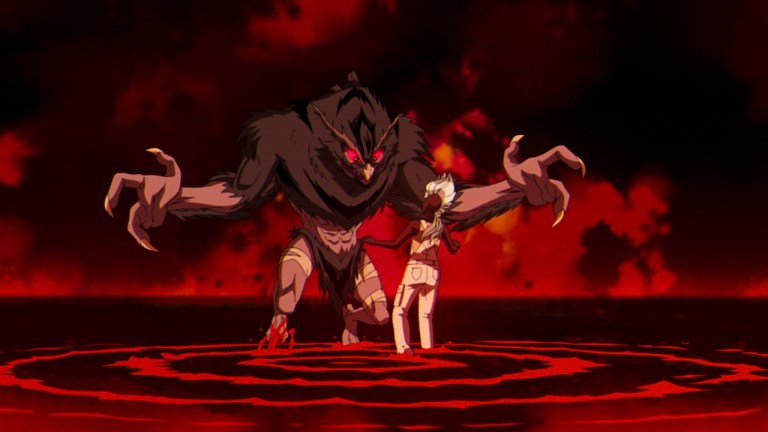
This X-Men ’97 article contains spoilers.
Back in the ’90s, the original X-Men: The Animated Series gained a following precisely because it could translate the tangled soap-opera storylines from the comic franchise into compelling, but easily digestible chunks. X-Men ’97 continues this tradition, but for a very different audience. Where only big nerds knew about Gambit or Deadpool in the ’90s, now they’re household names.
And yet, X-Men ’97 goes even deeper, filling the screen with deep-cut Marvel characters from both the world of mutants and the cosmos. If you want to put some names and backstories to some of these faces, here’s a guide to all the cameos and major character returns in the show’s sixth episode, “Lifedeath Part 2.”
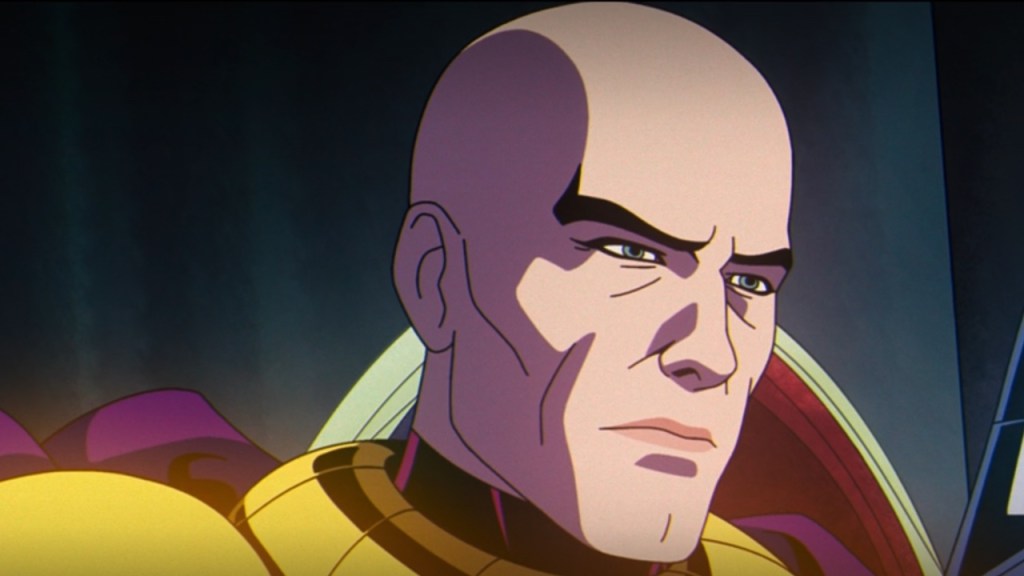
Professor Charles Xavier
Okay, most people reading this article know who Charles Xavier is. One of the most powerful mutant telepaths in existence, Xavier established himself as a leading academic on genetics. Thanks to the inheritance from his wealthy father, Charles had the means to establish Xavier’s School for Gifted Youngsters, an institution to give shelter to young mutants and help them control their gifts. Although far from perfect, Xavier’s dream of peaceful cohabitation between humans and mutants caused a deep divide from his closest friend, the mutant supremacist Magneto.
Anyone who watched X-Men TAS knows about Xavier’s backstory. However, that series ended with Xavier near death. His only hope of salvation came from a technology available only among the Shi’ar, an alien race of bird-like humanoids. TAS ended with Xavier joining the Shi’ar, leaving his school in the hands of Magneto.

Lilandra Neramani
Not just some benevolent race, the Shi’ar are one of the great empires in the cosmic Marvel Universe, alongside the Kree (who most know as the antagonist in Captain Marvel movies) and the shape-shifting Skrulls. Although expansionist as any other empire, the Shi’ar have a chance for peace, thanks to Empress Lilandra.
Lilandra became Empress of the Shi’ar after the death of her mad brother D’ken, whose thirst for power led to his undoing, as depicted in the TAS adaptation of the Dark Phoenix Saga. Lilandra hopes to reverse her brother’s destructive ways, reimagining the Shi’ar Empire as a diverse and peaceful regime. She puts that hope into action by recruiting Professor X, with whom she eventually falls in love and marries.
Although episode six of X-Men ’97 ends with Xavier leaving the Shi’ar, his telepathic connection to Lilandra means that his heart remains in space. That connection will likely pull him back into space and will pull the Imperial Guard down to Earth.

Deathbird
Of course, not everyone in the Shi’ar Empire supports Lilandra’s reforms, least of all her sister Cal’syee Neramani, better known as Deathbird. Like her brother D’Ken, Deathbird has a thirst for violence and Shi’ar supremacy. However, where her brother’s madness made him a fool, Deathbird’s cunning makes her a far more dangerous enemy.
In fact, it’s that cunning that allows Deathbird to remain a major player in the Shi’ar Empire, despite the public perception of her. Deathbird’s birth signaled a prophecy of great evil, which drove leaders to strip away her name and exile her from the Imperium. With D’Ken gone and the progressive Lilandra in power, Deathbird returned to claim the throne. Over the years, Deathbird’s allegiances shifted from enemy to ally of the X-Men and back again.
In X-Men ’97, Deathbird appears to lead the Imperial Guard, which keeps her in Lilandra’s orbit, despite her clear disdain for her sister’s leadership.
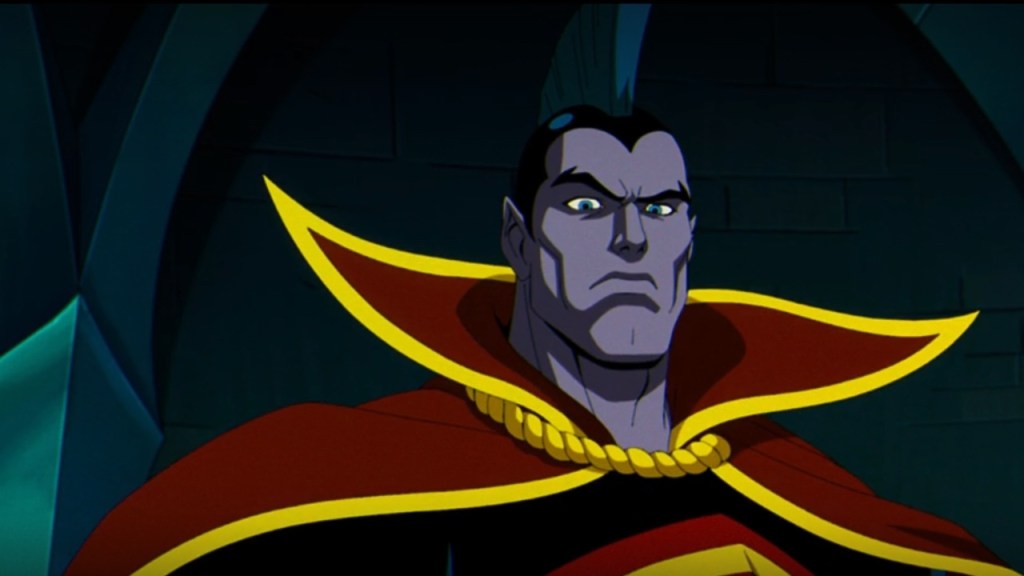
Gladiator and the Imperial Guard
Like any other empire, the Shi’ar have a vast army with which they enforce their will. But for the most extreme conflicts, the Shi’ar have superheroes — a whole legion of super-heroes in fact. Led by Gladiator, the Imperial Guard is the elite fighting force of the empire.
If some of those Imperial Guard members feel familiar, they should. The original version that debuted in 1977’s X-Men #107, and is more or less faithfully reproduced in X-Men ’97, was based on the Legion of Super-Heroes, a DC Comics team from the future. In the late ’70s and ’80s, the Legion of Super-Heroes was an incredibly popular comic, thanks in part to the designs by artist Dave Cockrum. However, Cockrum worked on the comic for less than a year before departing for Marvel, where he joined writers Len Wein and Chris Claremont to relaunch a forgotten comic called X-Men. In fact, Cockrum brought with him some characters he intended to use for the Legion, including a blue teleporting alien he called Nightcrawler and a weather controller called Typhoon, whom he combined with a feline character called Black Cat to create Storm.
In the Imperial Guard, Colossal Boy and Saturn Girl of the Legion became Titan and Oracle. Legion star Superboy inspired the leader of the Imperial Guard, Gladiator aka Kallark (read that name aloud). As in X-Men ’97, the Imperial Guard began as a noble but oppressive team. Over the years, however, they’ve softened to more of a heroic group, better matching their DC Comics predecessors.
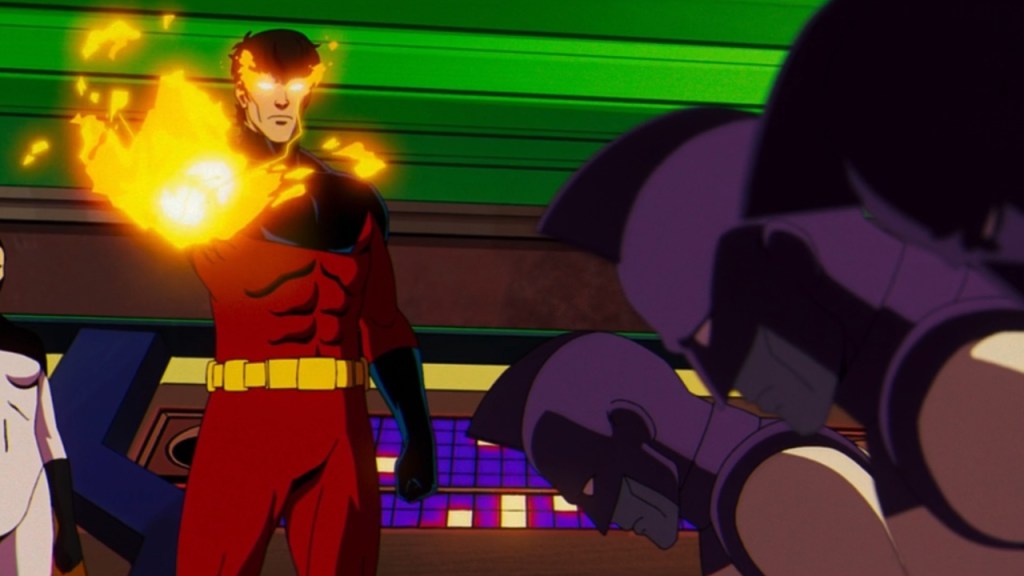
Vulcan
If you’re not an avid comic book reader, you may not notice the blue-suited member of the Imperial Guard who attacks the Kree at the start of “Lifedeath Part 2.” He doesn’t have a single line, no one addresses him by name, and his energy powers don’t really standout among the others.
However, those who do recognize him know what a big deal he is. That’s Vulcan, aka Gabriel Summers. If that last name stands out, it should. Gabriel is the brother of Scott Summers (Cyclops) and Alex Summers (Havok). For years, Mister Sinister teased the existence of a third Summers brother, a child who survived the death of their pregnant mother Katherine. Marvel kept the identity of that lost sibling a secret for years, at times suggesting that the third brother could be Gambit, Cable, and the most ’90s superhero of all time, Adam X the X-Treme.
After all that build up, it was a bit of a disappointment when Gabriel debuted as the third brother, a mad and ambitious figure in the Shi’ar Empire. Eventually. Vulcan became emperor of the Shi’ar, but nearly leads the civilization to ruin before he’s deposed. It’s not clear if Vulcan will play a larger part in X-Men ’97, or he’ll join his brother Havok as an unmentioned background player.
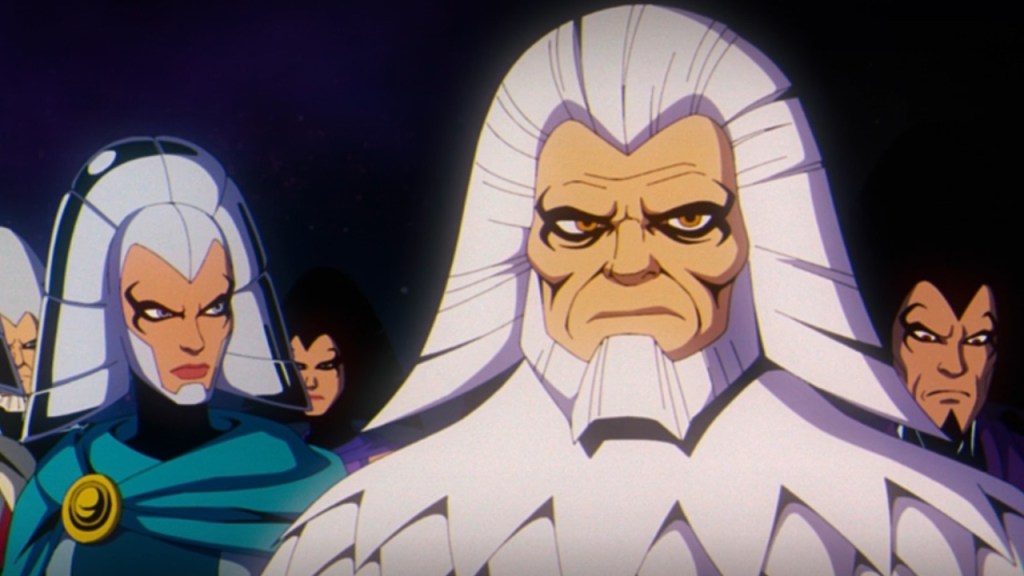
Lord Araki
On one hand, Lord Araki is a wise counselor who provides guidance to the leader of the Shi’ar Empire. On the other, he believes in the supremacy of the Shi’ar and struggles to accept Lilandra’s vision.
Araki serves as Chancellor of the Shi’ar, handling the day-to-day governing of the empire. Lilandra’s romance with Xavier makes that job increasingly difficult, which drives Araki to push back against her progress, despite often seeing the wisdom in her ideas.
In the comics, Araki has died several times, only to return in a cloned form. X-Men ’97 probably won’t bring over this aspect of the character, but it may be worth keeping in mind the next time the Shi’ar get involved in a major battle.
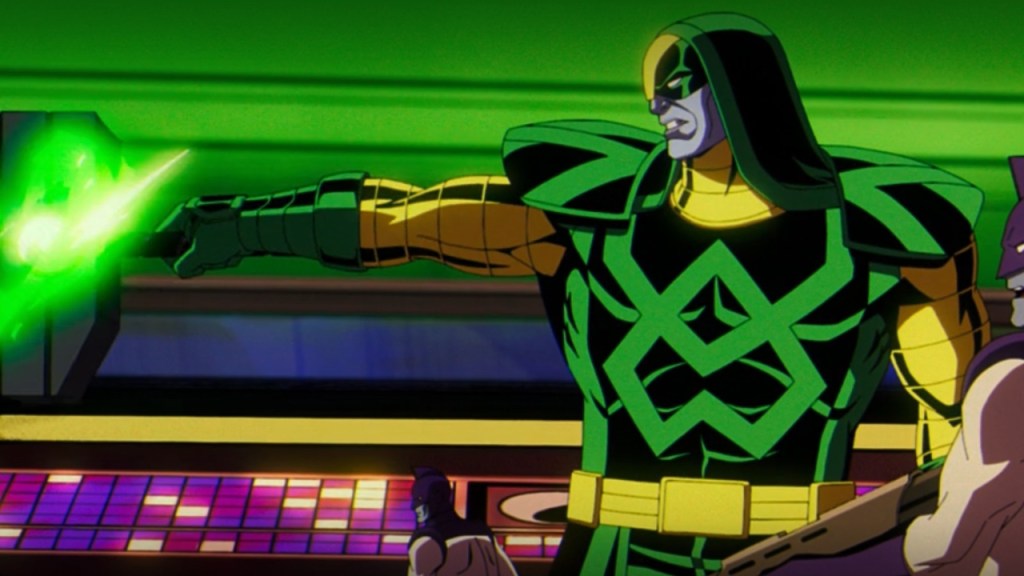
Ronan the Accuser
Fans of the MCU may recognize Ronan the Accuser as the chief antagonist of 2014’s Guardians of the Galaxy. Portrayed there by Lee Pace, Ronan was little more than a religious fanatic who agreed to find the Power Stone for Thanos, and also sought to revoke the Kree Empire’s treaty with the planet Xandar. To be sure, Ronan displays similar motivations in the comics. As judges and executioners within the Kree Empire, Accusers have little discretion over them, which can lead to fanatical decisions.
However, most stories portray Ronan as far more reasonable and noble than his big screen appearance suggest. At his core, Ronan believes in justice. That conviction drives him to look past the morality of his empire, as determined by the Kree Supreme Intelligence, the powerful AI that guides the people. Like Gladiator, Ronan often fights on the side of the heroes, even if duty calls him back into service of the Kree Empire.
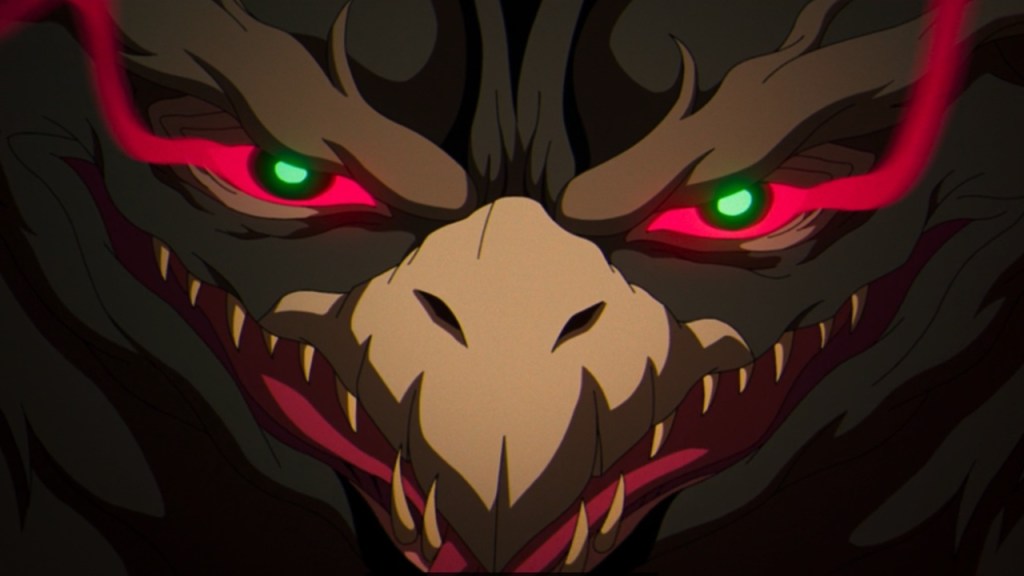
The Adversary
X-Men ’97 episode four teased the coming of the Adversary as a nightmare experienced by the depowered Storm. We see it in full in episode six, a demonic figure who taunts Storm while she recuperates with Forge. In the episode, Forge hints at a connection with the Adversary and while Storm dismisses the idea as mere self-loathing, he’s telling the truth.
In the original comics X-Men comics, Forge was the latest in a long line of Navajo shamans. He rejected his heritage, eventually joining the U.S. Army and serving in the Vietnam war. Following the death of his fellow soldiers, a distraught Forge used his magic training to summon the Adversary and slaughter his North Vietnamese enemies. Horrified by his actions, Forge swore off magic and devoted himself to science, a natural choice given his technopathic mutant power.
However, he never fully escaped the Adversary, who continued to haunt him over the years, possessing his mentor Nazé and eventually Forge himself. The animated X-Men series have mostly put Forge in the background. But if he takes a larger role on the team, the Adversary could become a real problem for mutant kind.
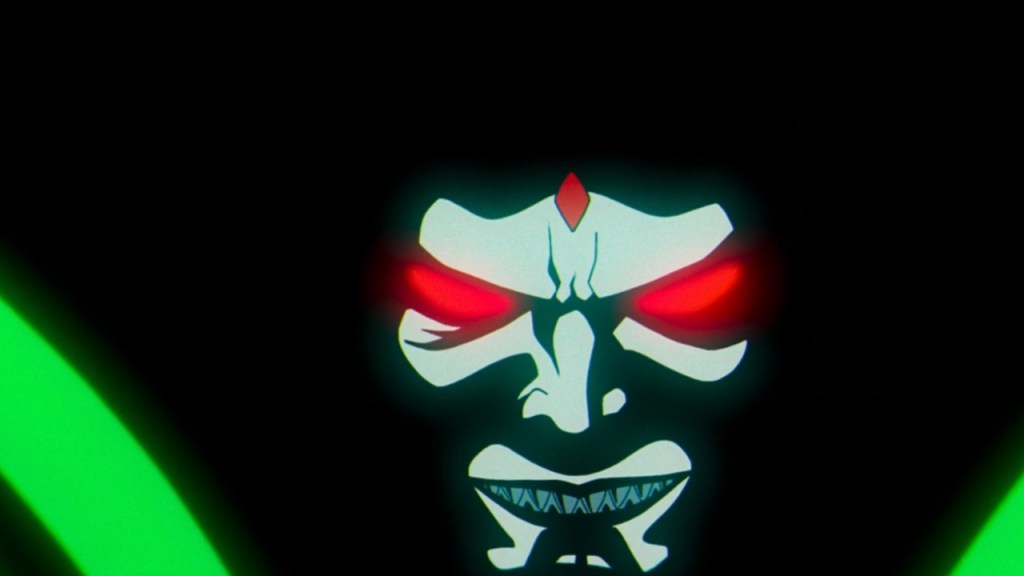
Mister Sinister
Mister Sinister debuted in the world of animated X-Men back in the second season of TAS, in which he played a part in disrupting the marriage of Cyclops and Jean Grey by brainwashing their fallen comrade Morph. He remained a background nuisance throughout the original series, but X-Men ’97 seems ready to push Sinister into the limelight.
Born in 18th century England as Nathaniel Essex, Mr. Sinister became interested in genetics after reading the work of Charles Darwin. His brilliance in the subject eventually drove him to Dr. Herbert Wyndham, who would become the High Evolutionary, and to the concept of mutation. Mutants became an obsession for Essex, especially the Summers family. Injecting himself with the mutant gene, Essex became Mister Sinister. In addition to playing with the lives of the Summers family, including creating Jean Grey clone Madelyne Pryor, Sinister surrounds himself with his own clones.
In short, Sinister is a delightful, almost unkillable madman, ready to make life awful for Cyclops and the Children of the Atom in general.
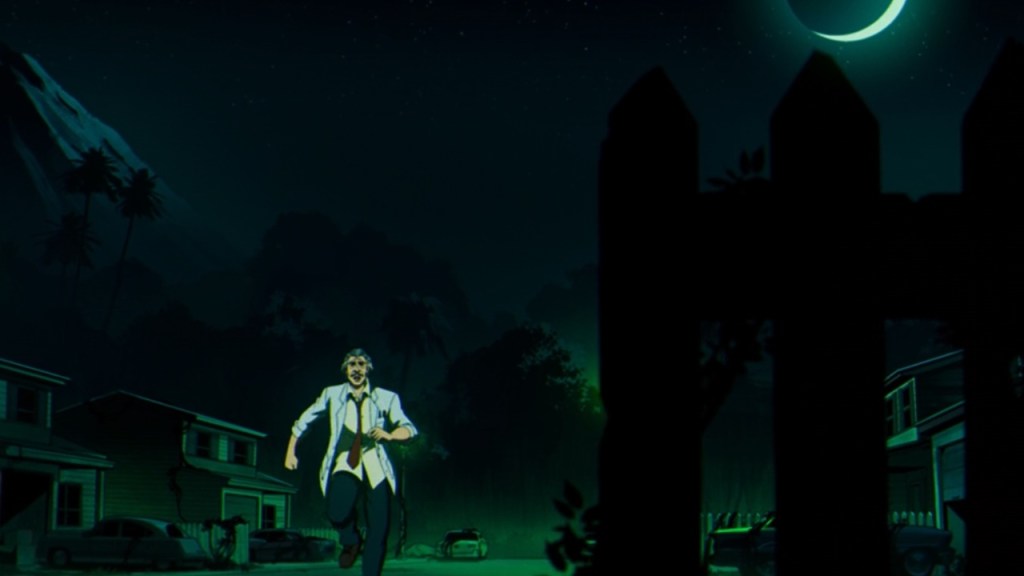
Bolivar Trask
Fans of X-Men movies may recognize the name Bolivar Trask, even if they don’t quite recognize the face. That’s because Trask has appeared in two live action X-Men movies, albeit played by actors who couldn’t look more different from the source material or one another. In X-Men: The Last Stand, the legendary Bill Duke plays Homeland Security chief Bolivar Trask. In X-Men: Days of Future Past, Trask is an inventor in the 1970s, played by Peter Dinklage.
Despite the vast physical differences in these portrayals, Trask remains the same across all adaptations. He’s the scientist who invented the Sentinels, the massive robots that hunt mutants. Trask appeared throughout TAS, but has just been a minor player in X-Men ’97. However, given the actions of the Master Mold that destroyed Genosha, it’s clear that Trask’s legacy of hate continues.
X-Men ’97 is streaming now on Disney+.
